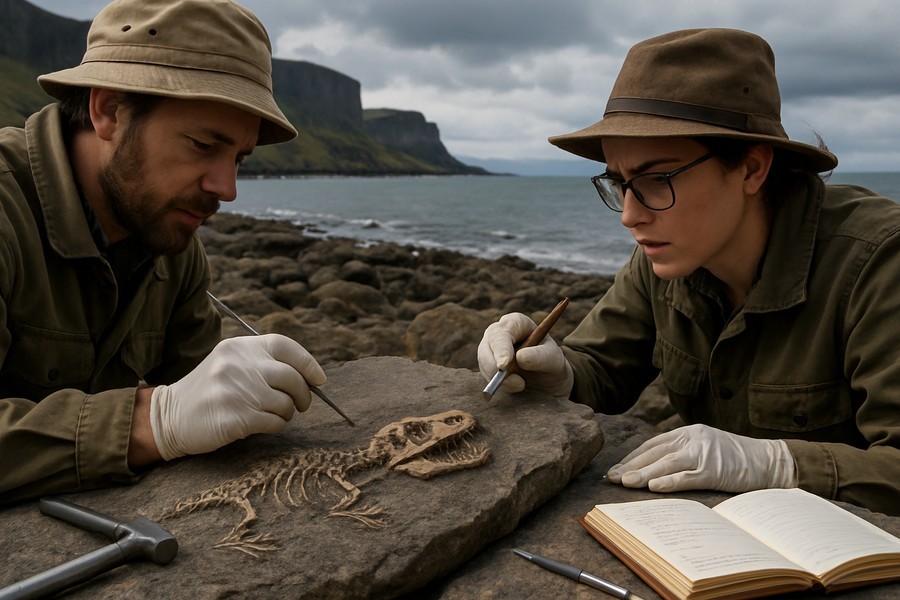
Discovery of a Unique Jurassic Reptile with Fanged Teeth on Skye
A fossil of a hitherto unknown reptile with fangs resembling those of a snake and believed to have lived approximately 167 million years ago, has been unearthed on Skye. The reptile is believed to have been a unique species and family of Jurassic creatures, possibly related to the early ancestors of modern-day lizards and snakes.
The reptile has been christened Breugnathair elgolensis, translating to "false snake of Elgol", as a tribute to the region in southern Skye where it was discovered. This fossil is one of the most ancient and intact Jurassic lizards known to researchers.
Discovery Details and Analysis
A team of international researchers, including experts from a renowned American Museum and National Museums Scotland, closely examined the fossil. According to their observations, Breugnathair elgolensis possessed jaws and teeth akin to a snake's, specifically similar to those of modern pythons. However, unlike contemporary snakes, this reptile had limbs and proportions that resembled a lizard's.
The researchers indicated that the Breugnathair elgolensis could potentially provide additional evidence about the lizard-like forefathers of snakes. The lead researcher, a noted curator of palaeontology at a prestigious American Museum, stated, "Snakes are fascinating creatures that developed elongated, limbless bodies from lizard-like ancestors."
Significance of the Find
"Breugnathair has a snake-like feature in the teeth and jaws, but in other ways is surprisingly primitive. This might be suggesting that snake ancestors were very different from what we expected, or it could be evidence for the evolution of predatory habits in a primitive, extinct group," he added.
The fossil was discovered near Elgol by a curator from National Museums Scotland and is now a part of the museum's collection. The curator stated, "The Isle of Skye is one of the most crucial Middle Jurassic sites globally. Breugnathair elgolensis is a remarkable addition to the fossil record, helping to rewrite our understanding of the evolution of snakes and lizards."
Collaborative Research and Analysis
Other researchers involved in the study and analysis of the fossil hailed from the University of Cambridge, University of the Witwatersrand in Johannesburg, and University College London. The fossil was also subjected to high-power X-rays by the European Synchrotron Radiation Facility in Grenoble, France.
A professor from University College London, who co-led the study, stated, "The Jurassic fossil deposits on the Isle of Skye hold significant importance for our comprehension of the early evolution of many living groups, including lizards which were starting their diversification at around this time."
